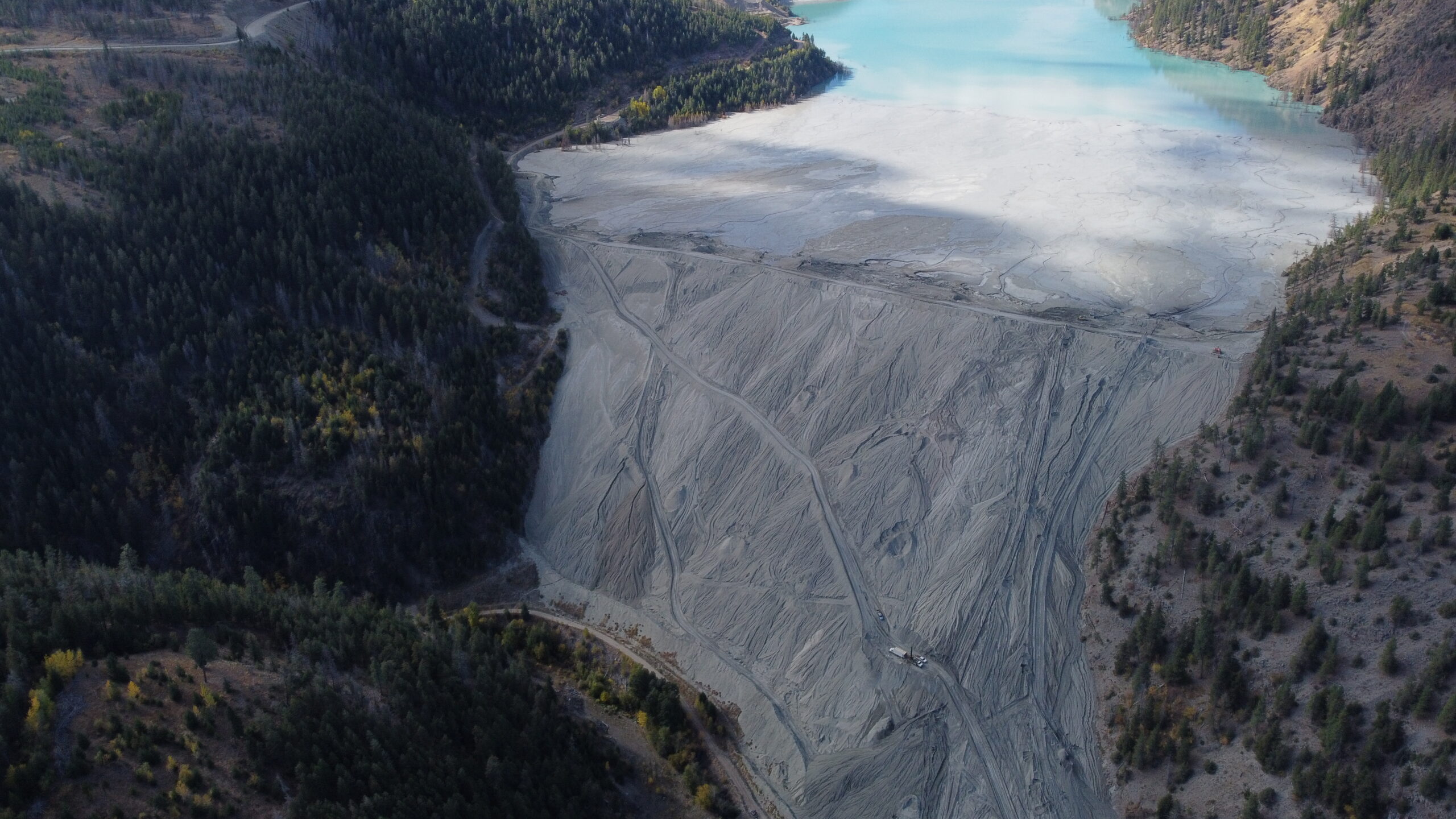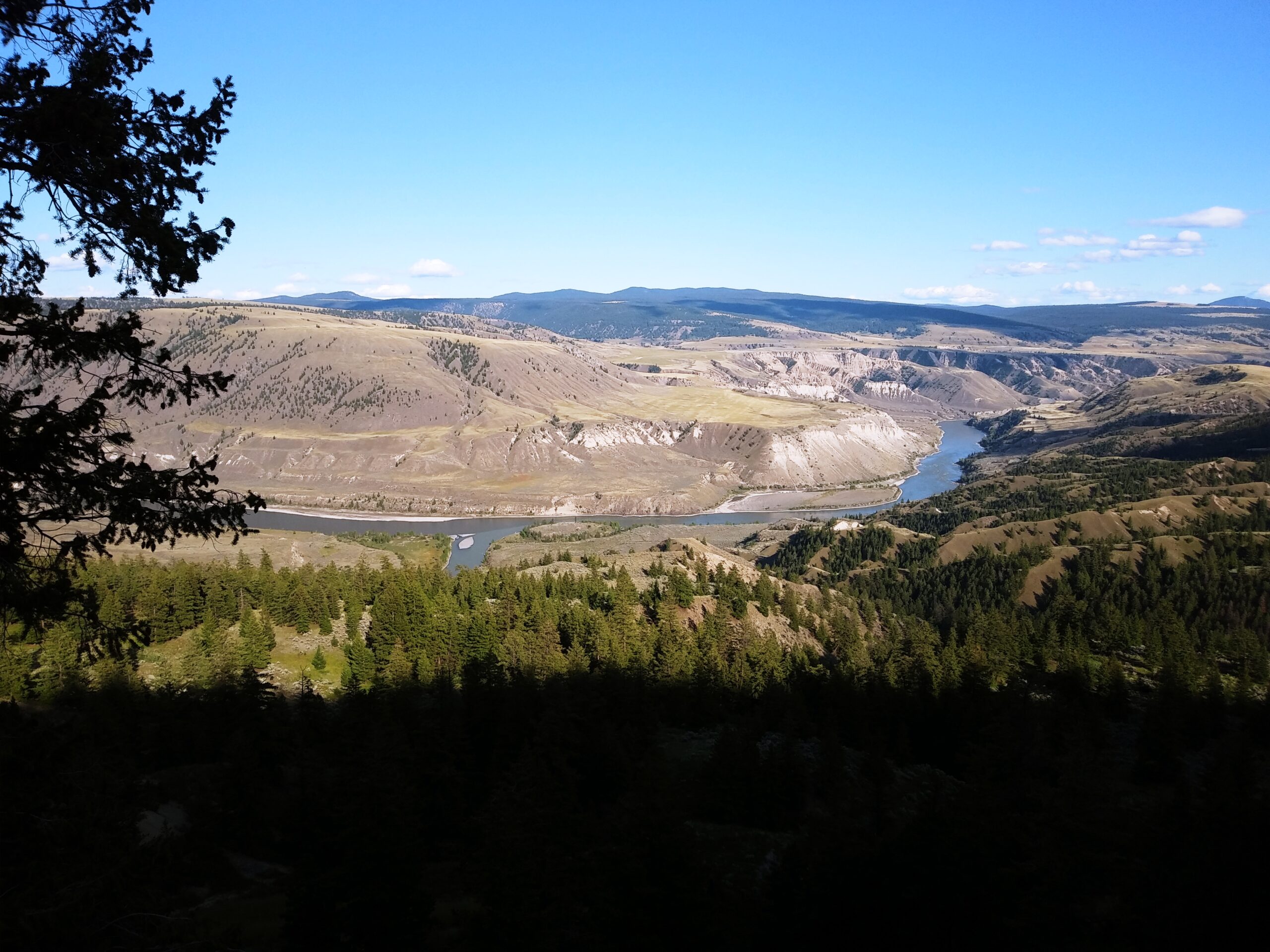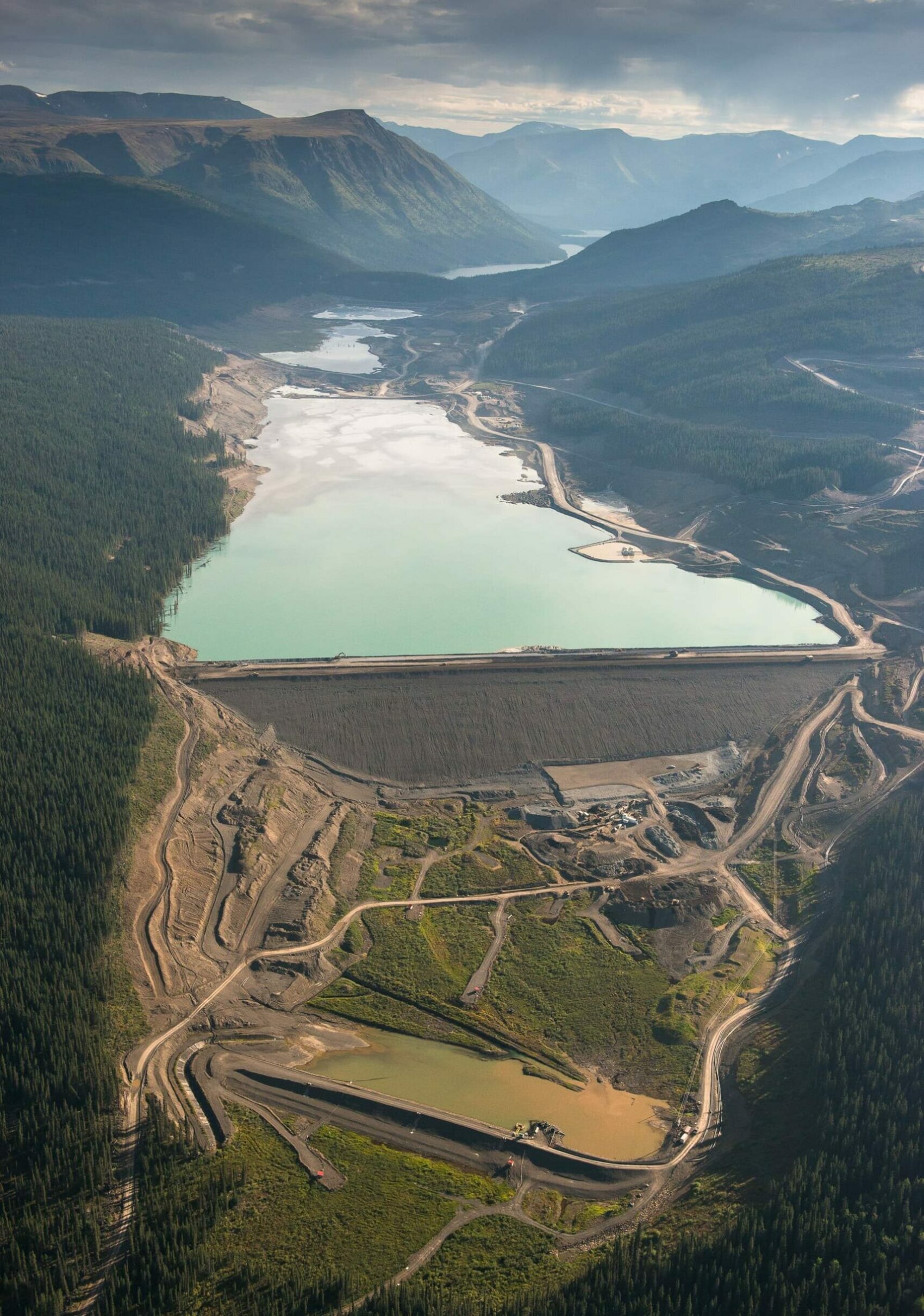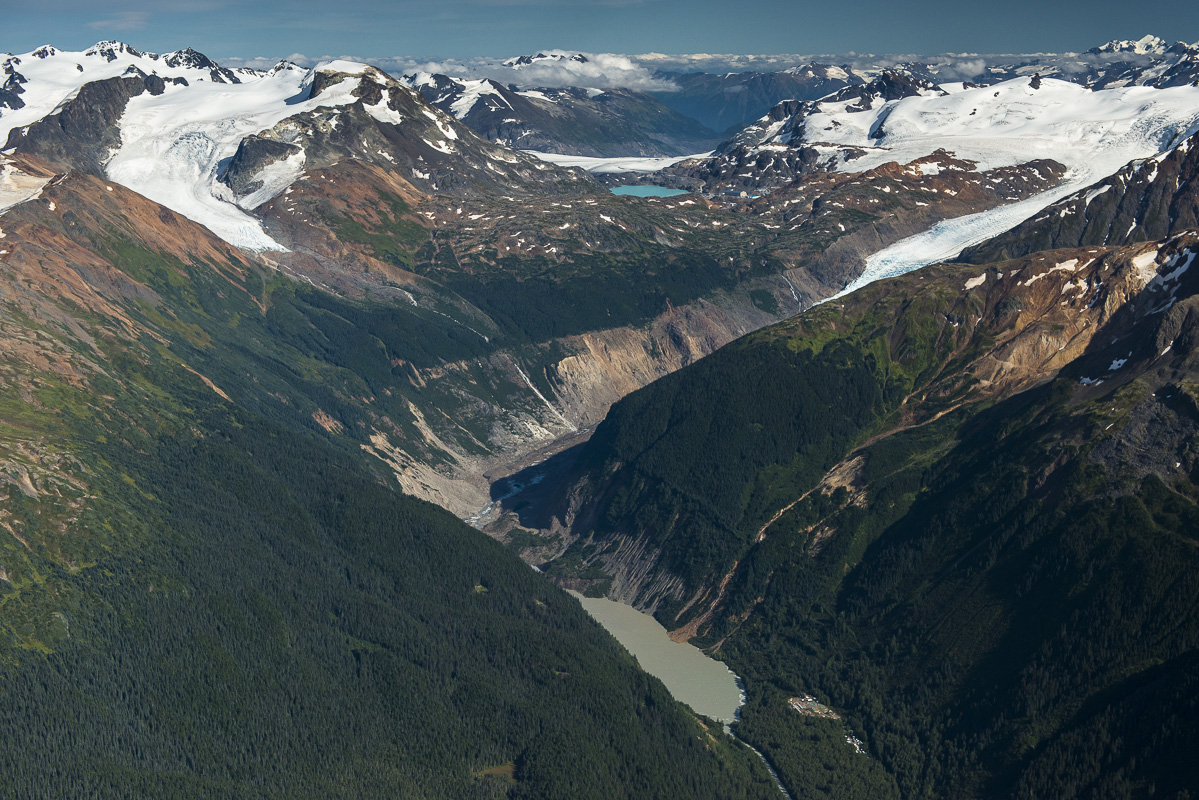
What’s scarier for Canadian communities — floods, or flood maps?
When maps showing areas most likely to flood are outdated, it puts people and property...
The Mount Polley mine in B.C.’s Interior is home to the most notorious tailings dam in the province. But it’s far from the only mining waste storage facility raising concerns.
Dozens of tailings dams like the one that failed in 2014 at Mount Polley still dot B.C., and little has been done to change the way the companies that own them store their mine waste, according to MiningWatch Canada co-founder Jamie Kneen.
Kneen said a tailings dam map, published by a coalition calling for reform to B.C.’s mining laws, shows a number of “high-risk sites.”
The map provides communities with information about the risks posed by “billions of cubic metres of toxic wet mine waste, called tailings, stored behind some of the highest dams in the world.” An accompanying report identifies mine tailings dams that would have the most severe consequences if they fail.
“We know that, mathematically, the probability that something will happen in the next 10 years is pretty high,” Kneen said in an interview.
On Aug. 4, 2014, the Mount Polley tailings dam burst, sending 25 billion litres of toxic sludge into Polley Lake, Hazeltine Creek and Quesnel Lake. The total volume of the waste — a mix of mine wastewater and toxic mining byproducts — would have filled about 10,000 Olympic-sized swimming pools.
In a statement to commemorate the 10th anniversary of the disaster, B.C. Energy, Mines and Low Carbon Innovation Minister Josie Osborne said changes to mining regulations have made B.C. “a world-leading mining jurisdiction.”
Osborne said tailings storage facilities in B.C. “must conform to one of the most stringent [tailings] regulatory frameworks in the world.”
“We have significantly reduced potential safety, health, environmental and business risks associated with tailings storage ponds,” the minister stated.
But ecologist and mining researcher Adrienne Berchtold, who works for the non-profit group SkeenaWild Conservation Trust, said B.C.’s changes to tailings dam regulations have resulted in “very little practical change on the ground” to reduce the risk of breaches like the one at Mount Polley.

Tailings storage facilities can last long after mines that relied on them have shut down. B.C.’s mines code requires companies to take action to reduce the “physical, geochemical, ecological and social risks” of their mine waste. But tailings ponds remain a permissible storage option.
Berchtold pointed out the independent panel the province established to examine the Mount Polley disaster was clear B.C. needs to move towards eliminating water in its tailings facilities — “and yet no one in government or the mining industry seems to be really asking how this goal can be achieved.”
“New mines are still being proposed with bigger and bigger wet tailings facilities, and there has been no concerted effort to remove water from closed tailings facilities,” Berchtold said in a written response to questions from The Narwhal.
Here are five tailings dams in B.C. that should be on your radar. Four would have ‘extreme’ consequences if they failed and one would have ‘very high’ consequences, according to the tailings dam map.
If you’ve driven east from Hope on Highway 3, you’ve likely noticed a solid wall of concrete high on a mountain as you’re approaching Princeton.
The Copper Mountain mine tailings dam, in the Similkameen Valley, is 192 metres high — four times the height of the Mount Polley tailings pond dam that failed.

The mine’s owner, Copper Mountain Mining Corporation, is looking to increase the permitted height of that tailings dam to 260 metres — higher than the tallest skyscraper in Vancouver. If approved, the increase would make Copper Mountain’s tailings dam the tallest in Canada.
The expansion would also more than double the mine’s permitted discharge into the Similkameen River, from 60 litres per second of treated wastewater to 200 litres per second.
The mine was fined $51,000 in November 2020 for exceeding discharge limits and contravening B.C.’s Environmental Management Act with unauthorized discharges.
Copper Mountain’s tailings pond sits in a natural valley at the mine’s site. According to the company, as of January 2019 it contained about 150 million cubic metres of settled tailings — a sludgy mix of solid mine waste — and is permitted to contain 240 million cubic metres. The expansion would increase the tailings pond capacity to 420 million cubic metres.
For comparison, Mount Polley contained about 44 million cubic metres of tailings, and released about 17 million cubic metres of water and eight million cubic metres of tailings in the 2014 spill.
In December 2023, the Lower Similkameen Indian Band requested a full environmental review of the proposed expansion at the Copper Mountain mine. The band’s request was backed by nearly two dozen Canadian and U.S. environmental groups, including the Wilderness Committee, David Suzuki Foundation, Okanogan Highlands Alliance and SkeenaWild Conservation Trust.
The submission was rejected by B.C.’s Environmental Assessment Office, on the grounds that engagement and consultation with the Lower Similkameen Indian Band was satisfactory and that the proposed expansion did not meet the threshold for an assessment. The assessment office said the province’s major mines office and Environment Ministry could “fairly, effectively and appropriately address” the band’s concerns about the project.
A Copper Mountain tailings dam failure would have ‘extreme’ consequences, according to the map.
The Gibraltar copper mine, which sits upstream of the Tsilhqot’in Nation community of Tl’esqox, is the fourth largest open-pit mine in North America.
Owned by B.C.-based Taseko Mines Limited, Gibraltar’s tailings storage facility holds about 757 million dry metric tons and is about three times taller than Mount Polley’s tailings storage facility. The mine opened in 1972, before environmental assessment legislation was in place, so no formal advance study of potential environmental impacts took place.
Tl’esqox Chief Francis Laceese told The Narwhal last year the mine is “another Mount Polley situation waiting to happen.”

For decades, the mine has been accumulating water through snowmelt and rainfall. Billions of litres of water are taking up space in the tailings facility, putting the dam at greater risk of failure, according to a 2023 report by SkeenaWild Conservation Trust and BC Mining Law Reform.
Since 2009, the province has allowed Gibraltar to release untreated mine water into the Fraser River as long as the discharge meets certain requirements. The mine’s permit was updated in 2015 and again in 2019, allowing a total 50 per cent increase in waste discharge volume — the equivalent of about 10 Olympic-sized swimming pools per day.
The Tsilhqot’in Nation challenged the increase, citing potential negative impacts on the nation’s Rights and Title and questioning the province’s consultations and whether the permit amendments were “adequately protective of human health and the environment.”
B.C.’s environmental appeal board dismissed the challenge in December 2023.
The map says a Gibraltar mine tailings dam failure would have ‘extreme’ consequences.
In the wake of the Mount Polley breach, Red Chris — another open-pit mine once owned by the same company, Imperial Metals — came under intense scrutiny. Located on Todagin Mountain, near the Tahltan village of Iskut in the province’s northwest, Red Chris began operating in February 2015.
The mine’s tailings storage facility includes two dams, one measuring 80 metres and the second 53 metres, according to the company’s July 2023 disclosure statement.
The Tahltan Nation was initially critical of the mine and demanded an independent review of the mine’s tailings dam design. That 2014 review, conducted by engineering consulting firm Klohn Crippen Berger, flagged issues with the design and concluded “any failure of the Red Chris impoundment will likely have a much more significant environmental impact than the Mount Polley failure.”

In response to the review, Imperial Metals conducted further assessments of the terrain on which the tailings storage facility was built and “made adjustments” to address the review’s recommendations. The Mines Ministry was satisfied with the changes. However, the “basic conceptual model” of the tailings storage facility stayed the same, according to a ministry spokesperson.
Today, the nation supports the mine, now majority-owned by U.S.-based Newmont Corporation. In November 2023, the Tahltan Central Government inked an agreement with the province to collaborate with the B.C. Environmental Assessment Office on environmental assessments, permitting and approvals for the mine.
“With this agreement, we ensure that amendments involving substantial changes to Red Chris can only proceed with our consent, highlighting our commitment to environmental stewardship and a sustainable future,” then-Tahltan Central Government president Chad Norman Day said in a news release issued by the provincial government. “Reconciliation and economic development can indeed coexist, guided by strong environmental, social and governance standards, as envisioned by the Tahltan people.”
The company has applied to shift Red Chris’ operations from open-pit to underground block cave mining, which is considered less risky and environmentally damaging than open-pit operations. The change will require amendments to the mine’s permits, requiring Tahltan consent to proceed.
A Red Chris tailings dam failure would have ‘very high’ consequences, according to the map.
The Kerr-Sulphurets-Mitchell project proposed by Seabridge Gold is in British Columbia’s Golden Triangle, a mineral-rich region in the northwest.
The $8-billion proposal to mine gold, copper, silver and molybdenum was given the greenlight by the province in 2014. The certificate required the company to substantially start development by 2019. Five years and two extensions later, Kerr-Sulphurets-Mitchell received its substantial start designation from B.C.’s environmental assessment office in late July. Projects can be deemed substantially started once land-based physical activities that affect the environment are underway.
The mine’s proposed tailings storage facility is 239 metres high, which would make it the tallest tailings dam in Canada and the seventh tallest tailings dam in the world. It will be able to hold 2.3 billion tonnes of wet tailings, becoming one of the largest tailings storage facilities in the world.

“The mine’s wastewater, containing elevated metals and selenium, will require treatment for hundreds of years before release to the Unuk watershed — a watershed that supports salmon stocks of concern,” notes the 2023 report on high-risk mines in B.C. compiled by SkeenaWild and the BC Mining Law Reform coalition.
“The Kerr-Sulphurets-Mitchell Project has been designed with rigorous environmental measures to minimize its impact on the surrounding ecosystem and we are dedicated to ensuring that our mining activities meet the highest standards of safety and sustainability,” R. Brent Murphy, Seabridge Gold’s senior vice-president of environmental affairs, told The Narwhal following the report’s release.
A tailings dam failure would have ‘extreme’ consequences.
The Highland Valley Copper Mine is in the Fraser River watershed on Nlaka’pamux Nation territory. One of the mine’s five tailings storage facilities contains 1.2 billion cubic metres of tailings — equivalent to about 480,000 Olympic-sized swimming pools. The consequences of a failure at Highland Valley Copper sites are rated from low to extreme, according to the analysis by BC Mining Law Reform and SkeenaWild.
In the event of a breach of the mine’s biggest tailings dam, the wave of wastewater could be approximately 25 to 30 metres deep and flood an estimated 1,680 homes in Hope, about a two-hour drive west of Vancouver. About 4,000 people live in the “inundation zone” for a tailings breach failure, according to the company’s tailings storage facility operations, maintenance and surveillance manual.
The consequences of a tailings dam failure would be ‘extreme,’ according to the research by SkeenaWild and BC Mining Law Reform.
— With files from Francesca Fionda
Enbridge Gas will face Waterloo Region in a hearing before the Ontario Energy Board to renew an agreement that would allow the company to continue...
Continue reading
When maps showing areas most likely to flood are outdated, it puts people and property...

We’re suing the RCMP for arresting a journalist on assignment for The Narwhal. It’s an...

As glaciers in Western Canada retreat at an alarming rate, guides on the frontlines are...